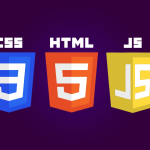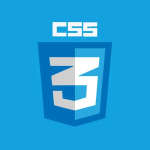Introduction
If HTML builds the structure of a web page and CSS gives it style, then JavaScript (JS) is what brings it to life.
It’s the heartbeat of modern web development enabling interactivity, animations, data handling, and real-time updates. Almost every website you visit today uses it in some way. From showing live notifications to validating forms and creating games, it makes the web dynamic and intelligent.
Table of Contents
What is JavaScript
JavaScript is a high-level, interpreted programming language that runs directly in your browser. It was first introduced in 1995 by Brendan Eich while working at Netscape, and since then, it has evolved into one of the most powerful and widely used programming languages in the world.
It allows developers to:
- Make web pages interactive
- Handle user input
- Communicate with servers
- Update content without reloading the page
- Build full-scale web and mobile applications
You can explore JavaScript’s official documentation at MDN JavaScript Guide.
How JavaScript Works
When you open a web page, your browser includes a built-in JavaScript engine that reads and executes the script.
For example, in Google Chrome, it’s called V8, while Firefox uses SpiderMonkey.
Here’s a simple example of a function:
function greet() {
alert("Welcome to TechSolana!");
}
This code shows a popup alert message when the function runs.
You can connect it with HTML easily:
<button onclick="greet()">Click Me</button>
When a user clicks the button, JavaScript executes the greet() function, making the page interactive.
Adding it to a Web Page
There are three main ways to include it in your web projects:
- Inline JavaScript – written directly in an HTML element.
<button onclick="alert('Hello!')">Say Hello</button> - Internal JavaScript – added inside the
<script>tag.<script> console.log("Hello from CodeHaven!"); </script> - External JavaScript – stored in a separate file and linked to HTML.
<script src="app.js"></script>
Using an external file (app.js) is the best practice for clean, organized code.
Key Features
JavaScript is powerful because of its simplicity and flexibility. Some of its main features include:
- Dynamic Typing: You don’t need to declare variable types.
- Event Handling: Respond to clicks, key presses, and user actions.
- DOM Manipulation: Access and modify HTML elements directly.
- Asynchronous Programming: Perform tasks like fetching data without freezing the page.
- Cross-Platform Support: Works on browsers, servers, and even IoT devices.
Variables and Data Types
You can store information in variables using var, let, or const.
let name = "John";
const website = "TechSolana";
var age = 25;
It supports several data types:
- String (
"Hello") - Number (
42) - Boolean (
trueorfalse) - Array (
[1, 2, 3]) - Object (
{name: "John", age: 25})
DOM Manipulation
The Document Object Model (DOM) represents the structure of a web page.
It can access and modify it dynamically:
document.getElementById("title").style.color = "blue";
This line changes the text color of an element with the ID title.
With just a few lines of code, you can build interactive pages toggle menus, create modals, or update text instantly.
Functions and Events
Functions are reusable blocks of code that perform specific tasks.
function sum(a, b) {
return a + b;
}
You can trigger these using events like onclick, onload, or onchange.
For example:
<button onclick="alert(sum(3, 5))">Add Numbers</button>
When clicked, the button runs the sum() function and shows the result.
Modern JavaScript (ES6 and Beyond)
JIt keeps evolving. The ES6 (ECMAScript 2015) update brought major improvements like:
letandconst- Arrow functions (
() => {}) - Template literals
- Classes and modules
- Destructuring and spread operators
These make it cleaner, faster, and easier to write.
Example:
const greetUser = (name) => `Hello, ${name}! Welcome to CodeHaven.`;
console.log(greetUser("Zain"));
Beyond the Browser
JavaScript is no longer limited to web pages.
With Node.js, developers can run it on servers to build powerful backends.
Frameworks like React Native and Electron allow developers to create mobile and desktop applications using the same codebase.
That’s why it is often called a “full-stack language” you can use it everywhere.
Why Learn it
Here’s why it is worth mastering:
- It’s beginner-friendly yet powerful.
- You can build websites, apps, and games.
- It’s in high demand across the tech industry.
- It’s supported by a massive global community.
- It integrates seamlessly with HTML and CSS.
If you want to start your web development journey, It is the ultimate next step after learning HTML and CSS.
Conclusion
JavaScript is the foundation of modern, interactive, and responsive web applications.
From simple animations to complex data-driven systems, it empowers developers to build anything imaginable on the web.
Whether you’re a student exploring front-end development or a future full-stack engineer, mastering it opens the door to countless opportunities.
Also Check Mastering CSS – Powerful Art of Styling the Web – 2025











1 thought on “JavaScript – Language that makes the Web Powerful – 2025”